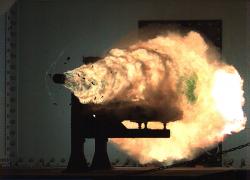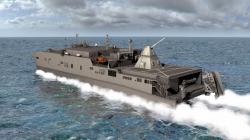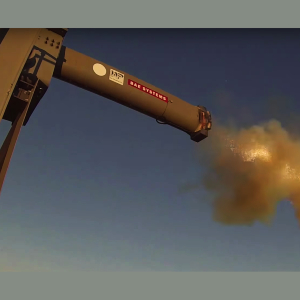Famous moments of the American railgun. Credit: US Navy.
–
In Oslo, we followed the fate of an electromagnetic rail cannon, or railgun, developed and tested by the US Navy for several years. It was not easy, but the development of the railgun has had a number of successes. But now this dream seems to be coming to an end. The US Navy canceled its funding for the next years, which apparently means the definitive end of the project. Railgun’s performance has been admirable, but has recently been overshadowed by other types of weapons, most notably missile-type hypersonic technology.

Early stage of railgun development (2008). Credit: US Navy
–
The Navy wanted to have an electromagnetic cannon that would fire projectiles at hypersonic speeds, but that time seemed to be over. The project ends without the railgun reaching the sea. During the development of the US Navy railgun, they acquired a number of useful technologies that can now enrich the development and modernization of other weapon systems.
According to experts, the railgun appears to have been the victim of a change in the US Navy’s strategic goal. US forces will no longer fight terrorists and similar asymmetric threats, but focus more on measuring forces with militarily advanced adversaries, especially China. As part of this change, the Navy is emphasizing faster, longer-range weapons systems that will be able to hit naval and ground targets from a considerable range in the event of a large-scale conflict. As a result, the Navy’s budget for 2022 does not devote a single dollar to the development of the railgun.
Railguns are theoretically safer and more user-friendly than conventional ship cannons. Instead of gunpowder and similar explosives, they use only electricity and magnetism, firing projectiles at higher speeds. Despite their undoubted advantages, however, railguns posed considerable complications for the navy. Today, the US Navy has only three ships at its disposal, on which railways could be meaningfully installed and used in combat operations – Zumwalt-class stealth missile destroyers. And it won’t improve until the late 1920s, when the Navy begins construction of a new generation of DDG (X) destroyers.

The intention to install a prototype railgun on the fast transport ship USNS Millinocket eventually failed. Credit: US Navy.
–
As an offensive weapon, the railgun has a relatively small range. They range about 80 to 160 kilometers. A ship armed with a railgun would thus be within range of a number of anti-ship weapons, including the Chinese missile system DF-21D. Railgun also has defensive potential, but the US Navy can easily replace it with a variety of missiles and firearms. The Navy recently announced that the zumwalt will be armed with the Common Hypersonic Glide Body (C-HGB) hypersonic system. It moves at speeds up to Mach 17 and reaches over 1,600 kilometers. This is sufficient to relatively safely eliminate the enemy’s valuable targets.
The question is whether this will be the definitive end of railgun weapons. Railguns can be used elsewhere than on ships. They are being developed and tested by China, India, Russia, as well as Turkey. But all of these countries are undoubtedly watching the United States as a leader in military technology. They will certainly feverishly consider whether to continue developing railguns and hope to benefit from them, or whether they should rather send the railguns to ice as well.
Video: US Testing Its Latest Monstrously Powerful $500 Million RailGun
https://www.youtube.com/watch?v=2bLBqOTx5Ag
Literature
Popular Mechanics 15. 6. 2021.
– .


